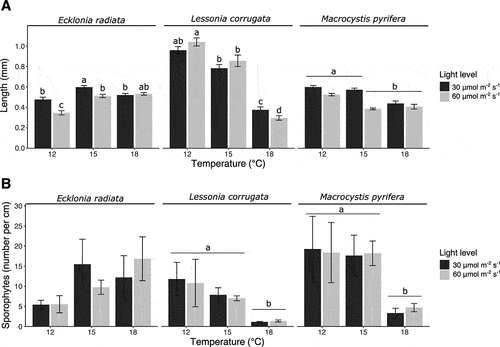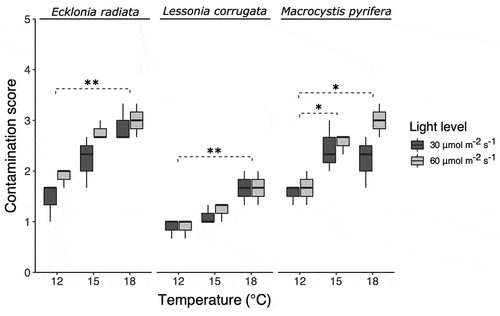Figures & data
Figure 1. Bar plots of (a) sporophyte length and (b) sporophyte density on the seeded twine. Letters above the bars indicate significant differences based on the SNK-test (p < 0.05). Error bars show SEM, with n = 3.

Table 1. Sporophyte length per species. Summary of two-way ANOVA of the mean sporophyte length (mm) exposed to three temperatures (12°C, 15°C, and 18°C) and two light levels (30 and 60 μmol photons m−2 s−1), followed by a Student–Newman–Keuls (SNK) post-hoc test.
Table 2. Sporophyte density per species. Summary of two-way ANOVA for the main and interactive effect of the mean number of sporophytes per cm of line, followed by a Student–Newman–Keuls (SNK) post-hoc test.
Figure 2. Boxplots of contamination score (between 0–5) for three kelp species. One asterisk (*) indicates a p value smaller than 0.05. Two asterisks (**) indicate a p value smaller than 0.01 as per Dunn’s post-hoc test.

Table 3. Contamination score per species. Scheirer–Ray–Hare test results for the main and interactive effects of a two-way non-parametric ANOVA.
